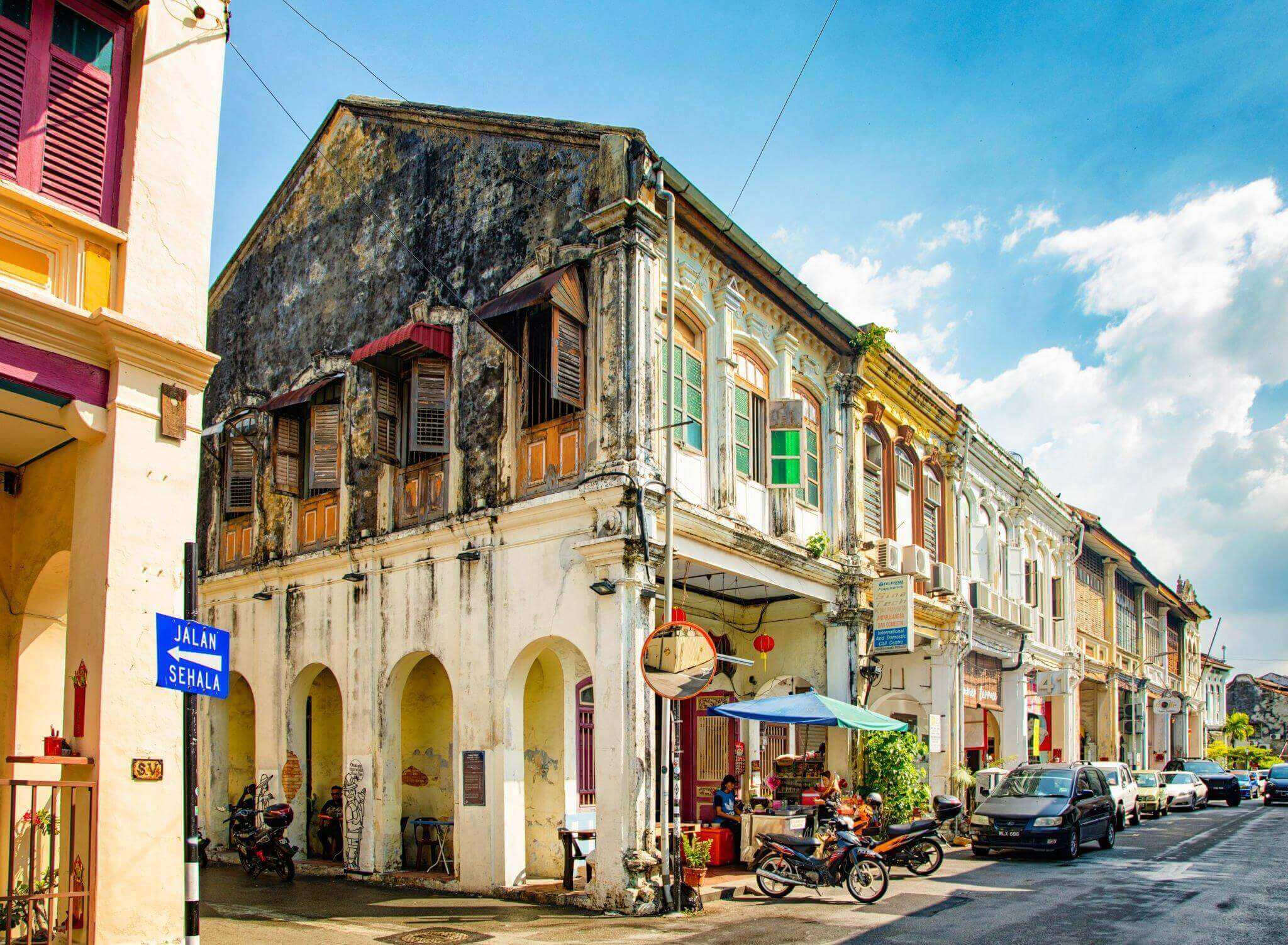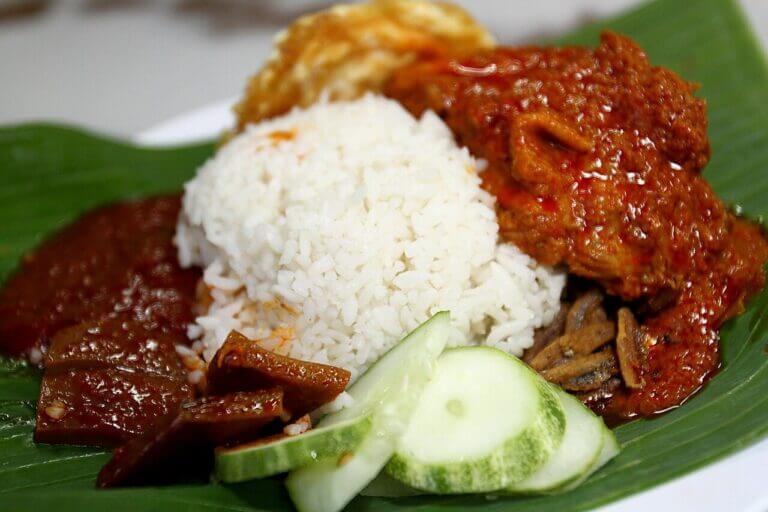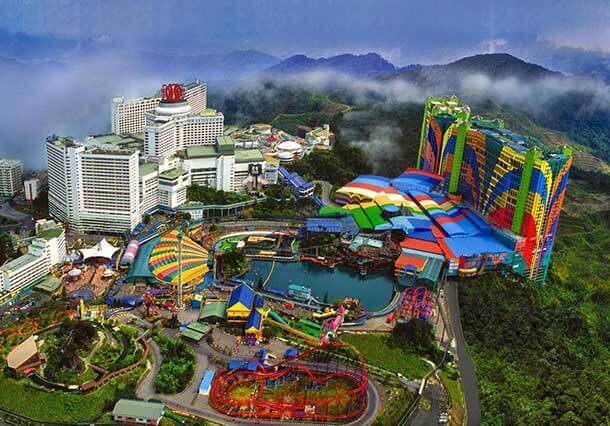Pulau Pinang is located off the northwest coast of Malaysia, in the Straits of Malacca. The island is situated just a short ferry ride from the mainland, making it easily accessible for both visitors and residents. The island is surrounded by crystal-clear waters, with a lush, tropical landscape that is home to an abundance of wildlife and vegetation. From its stunning beaches to its rolling hills and lush forests, Pulau Pinang is a true island paradise, offering visitors a peaceful and serene escape from the hustle and bustle of city life.
The Beginning of a Legacy
The history of Pulau Pinang can be traced back to the late 1700s when traders from across the seas first discovered the island. They saw it as a perfect location for trade and commerce due to its strategic position along the busy shipping lanes of the Straits of Malacca. In 1786, the British East India Company sent Captain Francis Light to establish a settlement on the island. He signed a treaty with the local Sultan, granting the British the right to establish a trading post on the island. The settlement quickly became a hub for trade, attracting merchants and settlers from all over the world.
i. A Hub for Trade and Commerce
As the settlement grew, so did the importance of Pulau Pinang as a trading port. The island became a key stop for ships traveling between China and India, with a thriving community of Chinese, Indian, and Malay traders. The British East India Company established a free port on the island, encouraging trade and commerce by offering tax breaks and other incentives to merchants. This helped to further solidify Penang’s position as a major trading hub in Southeast Asia.
ii. British Colonial Rule
In 1867, Pulau Pinang became a British Crown Colony, marking the beginning of British colonial rule on the island. This was a time of significant change, with the British introducing new laws, systems, and infrastructure. They built roads, ports, and public buildings, and introduced new forms of transportation, such as trams and steamboats. These changes helped to modernize the island but also brought about cultural and social changes, with the British imposing their own values and norms on the local population.
iii. Post-Independence
In 1957, Pulau Pinang became part of independent Malaysia, marking the end of British colonial rule. Since then, the island has continued to grow and develop, becoming a major economic and cultural hub in the region. Today, Penang is known for its rich history, vibrant culture, and beautiful landscapes, attracting visitors from all over the world. With a thriving tourism industry and a growing economy, Pulau Pinang is well on its way to a bright future, building upon its rich history and legacy as a hub of trade and commerce in Southeast Asia.
A Diverse and Vibrant Community
Pulau Pinang is home to a diverse and vibrant community, with a rich mixture of cultures and backgrounds. The island has a predominantly Chinese population, with significant numbers of Malays, Indians, and other ethnic groups also living on the island. This diversity is reflected in the local culture, with a mix of traditional and modern elements that create a unique and vibrant atmosphere. The island is known for its delicious food, with a wide variety of cuisines available, from traditional Malay dishes to Chinese and Indian street food.
The city is a melting pot of cultures, with a rich blend of colonial-era architecture, street art, and modern amenities. The city is also a hub for arts and culture, with a thriving art scene, a variety of museums and galleries, and a rich literary tradition.
The Attractions
i. George Town
George Town, the capital city of Pulau Pinang, is a destination like no other. This UNESCO World Heritage Site is a stunning blend of history and culture, with its stunning colonial-era architecture, vibrant street art, and rich cultural heritage. From its founding as a British settlement in 1786, George Town has evolved into a bustling metropolis that’s full of life, energy, and wonder.
One of the main attractions of George Town is its street art. Stroll along the famous street art trail and be amazed by the vibrant murals and intricate graffiti that decorate the city’s walls. Many of these pieces tell stories of the city’s rich history and cultural heritage, and they provide a unique glimpse into the heart and soul of George Town. Another must-visit attraction is the Pinang Peranakan Mansion, a stunning example of Peranakan architecture and culture.
In addition to its rich history and cultural heritage, George Town is also a shopper’s paradise. Explore the numerous shops and boutiques in the city and discover unique, handmade goods and one-of-a-kind souvenirs.
ii. Penang Hill
Penang Hill is a must-visit destination for anyone looking to escape the hustle and bustle of city life. This scenic hill offers panoramic views of the island and the surrounding seas, making it a popular spot for picnics, hikes, and birdwatching. With its cool, fresh air and peaceful atmosphere, Penang Hill is the perfect place to relax, recharge, and take in stunning views.
Getting to Penang Hill is an experience in itself. You can take a funicular railway that takes you on a scenic journey up the hill, or you can hike to the top for a more adventurous experience. Whichever way you choose, you’ll be rewarded with breathtaking views of the island and the sea. Once you’ve reached the top, there are plenty of restaurants, cafes, and shops to explore, as well as several scenic hiking trails and picnic spots.
Penang Hill is not just a scenic retreat, it’s also a place rich in history and culture. There are several historic buildings and monuments located on the hill, including the Kek Lok Si Temple, a stunning Buddhist temple complex that’s known for its beautiful gardens and ornate architecture.
iii. Kek Lok Si Temple(极乐寺)
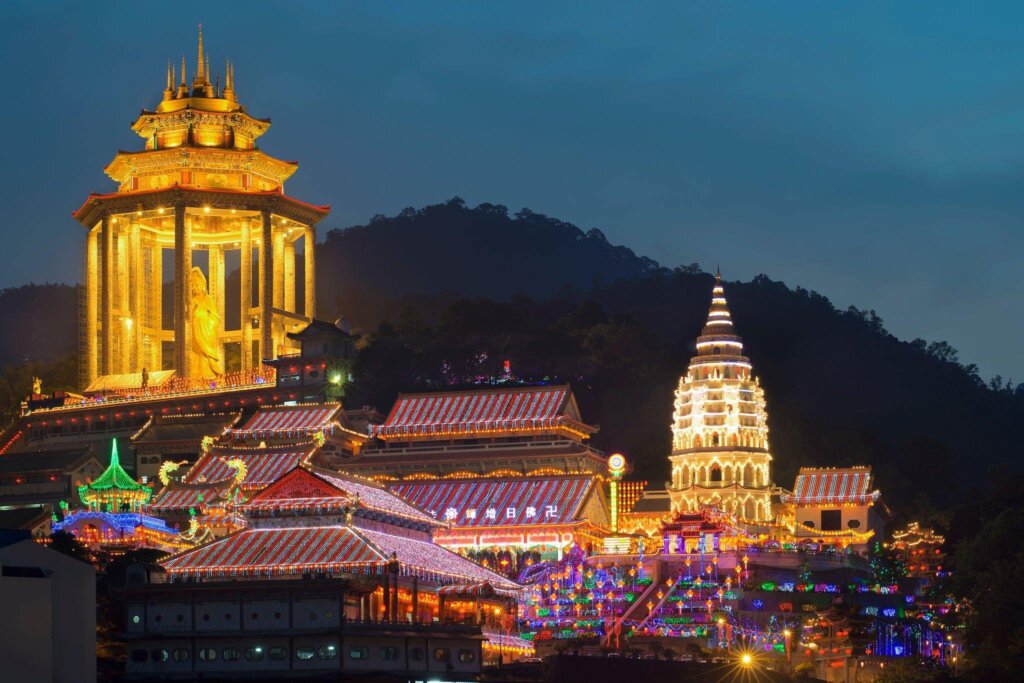
Kek Lok Si Temple is one of the largest Buddhist temples in Southeast Asia and a must-visit destination for anyone interested in religion, culture, and history. This stunning temple complex is a testament to the beauty and majesty of Buddhist architecture, with its intricate carvings, colorful sculptures, and magnificent pagodas. Whether you’re a devout Buddhist or simply a lover of beautiful buildings, Kek Lok Si Temple is a sight to behold.
The temple is made up of several buildings and monuments, each of which is more magnificent than the last. The centerpiece of the temple is the seven-tiered Pagoda of Rama VI, which is adorned with colorful sculptures and intricate carvings. From the top of the pagoda, you’ll be treated to panoramic views of the island and the surrounding seas. Another must-see attraction is the bronze statue of Kuan Yin, the Buddhist goddess of mercy, which is one of the largest of its kind in Southeast Asia.
In addition to its religious and cultural significance, Kek Lok Si Temple is also a place of natural beauty. The temple is surrounded by lush gardens and rolling hills, making it a peaceful and serene place to relax and escape from the hustle and bustle of city life.
iv. Fort Cornwallis
Fort Cornwallis is a historic fortification that played a significant role in the development of the island as a British colonial settlement. This massive fort, named after Charles Cornwallis, the Governor-General of India, was built in the late 1700s to defend the island against pirates and other invaders. Today, Fort Cornwallis is a popular tourist attraction, offering a fascinating glimpse into the island’s rich history and cultural heritage.
The fort has undergone several renovations and restorations over the years, and today, it serves as a museum and cultural center. Visitors can tour the fort’s many buildings and monuments, including the chapel, the prison, and the former governor’s residence. Each of these buildings has its own story to tell, and together, they paint a picture of what life was like for the British colonial settlers on the island.
v. Beaches
a. Batu Ferringhi Beach
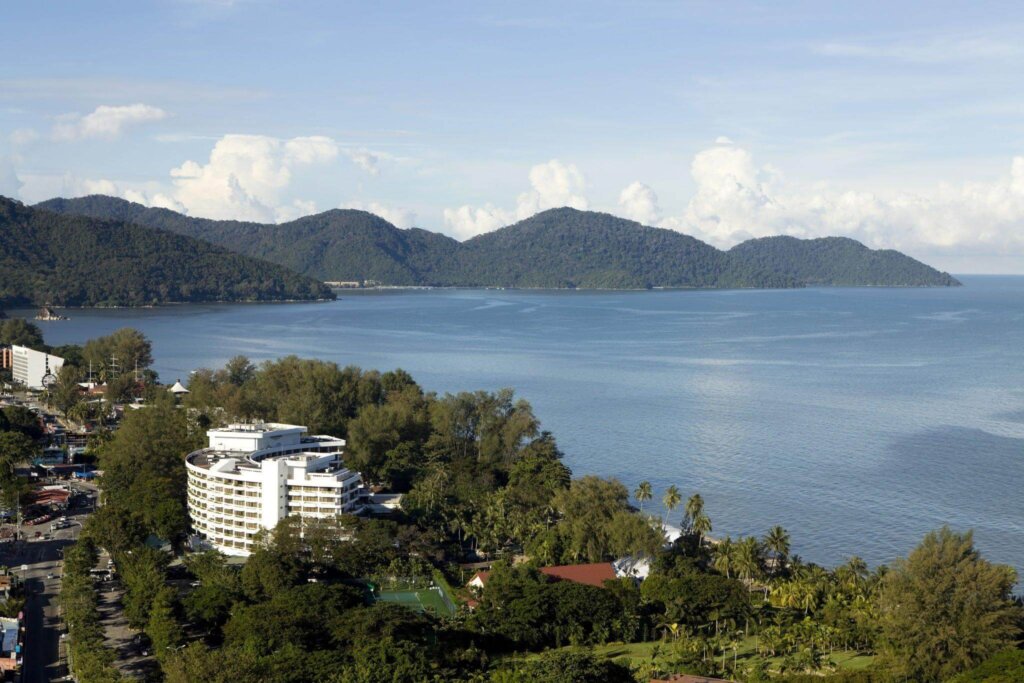
Batu Ferringhi is one of the most popular beaches in Penang, offering a lively atmosphere and plenty of restaurants, cafes, and bars. Visitors can enjoy a range of activities, from sunbathing and swimming to parasailing and jet-skiing.
b. Tanjung Bungah Beach

This charming and secluded beach is located on the northern coast of the island and is a popular spot for snorkeling and scuba diving. Visitors can explore the vibrant coral reefs that line the coast or simply relax on the soft sands.
c. Teluk Bahang Beach

This picturesque beach is located on the western coast of the island and is a popular spot for fishing, windsurfing, and kayaking. Visitors can relax on the sandy shores or explore the nearby nature reserve.
The Foods
Penang is a food lover’s paradise, known for its diverse and delicious cuisine that reflects the island’s rich cultural heritage. From street food stalls to high-end restaurants, there’s something for every palate and budget. Here’s what you need to know about eating in Penang.
i. Street Food

Penang is famous for its street food, and the island is dotted with hawker stalls serving up tasty treats. From savory noodles and rice dishes to sweet desserts and snacks, street food is a must-try for any foodie visiting Penang. Some of the most popular street food dishes include char kway teow (stir-fried noodles), laksa (spicy noodle soup), and cendol (sweet dessert).
ii. Local Cuisine
Penang is home to a range of local cuisine that reflects the island’s history and cultural heritage. From Chinese, Malay, and Indian dishes to fusion cuisine that blends traditional flavors with modern cooking techniques, there’s something for everyone in Penang.
iii. Seafood
With its location on the coast, it’s no surprise that seafood is a staple in Penang. From fresh seafood restaurants to seafood stalls, there’s no shortage of tasty seafood options on the island. Try the famous chili crab, a spicy crab dish made with a rich tomato and chili sauce, or opt for a steaming bowl of noodles with fresh prawns.
iv. Cafes and Restaurants
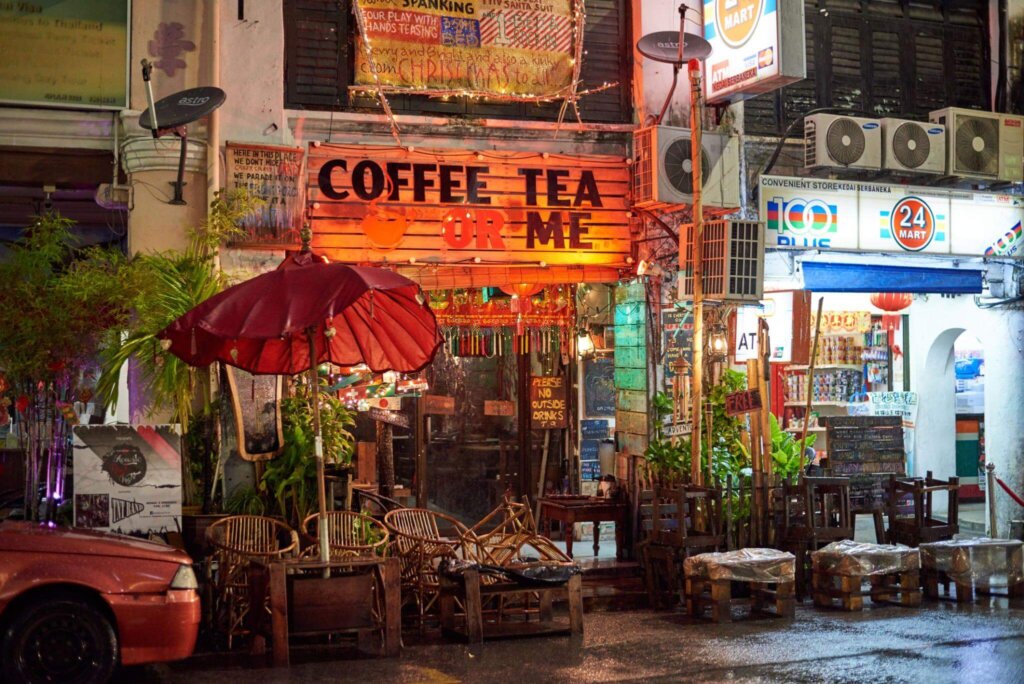
In addition to street food and local cuisine, Penang is home to a growing number of cafes and restaurants serving up international and fusion cuisine. From Italian and French cuisine to fusion dishes that blend Asian and Western flavors, there’s something for everyone in Penang.
v. Desserts and Snacks
No trip to Penang is complete without trying some of the island’s delicious desserts and snacks. From sweet and sticky desserts like kuih (bite-sized sweets) and cendol, to savory snacks like popiah (spring rolls) and keropok (crackers), there’s something for every sweet tooth and snack lover in Penang

Malaysia’s Precious Gem
With its rich cultural heritage, stunning natural scenery, and delicious cuisine, it’s no wonder that this island is considered one of the most popular tourist destinations in Malaysia.
From exploring the vibrant streets of Georgetown and admiring the colonial architecture, to visiting the stunning beaches and temples, there’s no shortage of things to see and do in Penang. With its rich heritage, vibrant culture, and breathtaking landscapes, this island is truly a must-visit destination for anyone looking to experience the best of what Malaysia has to offer. So, pack your bags and get ready to fall in love with Penang!

